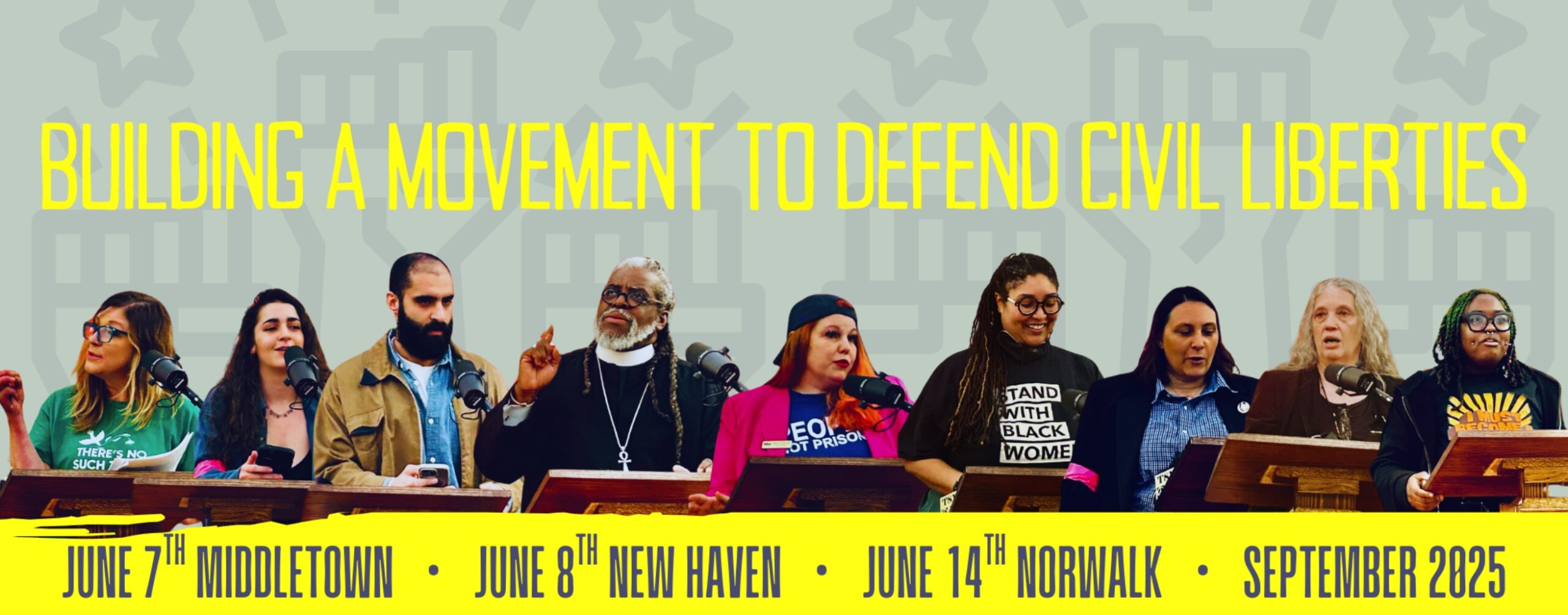Listen to the audio version >>
The previous Strike! Commentary described how the burgeoning movement to defend society against Trump’s tyranny is developing into a movement-based opposition. This commentary examines how the actions of that opposition can expand to defeat the MAGA juggernaut.

Minnesota “Hands Off” protest against Republican President Donald Trump and billionaire Elon Musk St. Paul, Minnesota, April 5, 2025. Photo credit: Fibonacci Blue, Flickr, CC BY 2.0
The emerging movement-based opposition is a convergence of people and organizations dedicated to ending the power of MAGA and Trump. It has been manifested in national days of action like Hands Off! MaydayStrong, 50501, and the upcoming No Kings Day. It can be seen in the coordinated action of hundreds of local and national organizations, ranging from Indivisible and MoveOn to the ACLU to the recently self-organized 50501, to dozens of major national and local unions. It is embodied in thousands of local and sectoral action groups and coalitions with many different affiliations or none at all. This commentary identifies potential growth points in the movement-based opposition, explores how to nurture and expand them, and indicates what they might achieve.
These organizations and actions, however varied they may be, are gradually emerging as aspects of one movement-based opposition. Like a growing plant or animal, the movement-based opposition needs not only to grow in size, but to develop new capacities and the structures to realize them. And it needs to feel and project an identity not just as a collection of separate constituencies and organizations, but also as a coordinated converging whole.
The movement-based opposition is more than just a lobby or a political faction. It is one part of a rising by society against the MAGA attack. That defense of society includes those courts, civil society institutions, and political forces who decide to participate. Along with these broader forces of social self-defense, the movement-based opposition can weaken and eventually eliminate the MAGA assault. It needs to paint a portrait of itself that reveals itself as more than an occasional demonstration, but rather as a continuous contesting of MAGA power.
The movement-based opposition achieves its goals by action in society. But in the chaotic Trump era the conditions under which it acts change weekly or even daily. For guidance it must depend less on a plan or a program than on an agenda of possible actions. Here are some agenda items for the next round of movement-based opposition at both local and national levels:
- Make the opposition visible to its participants, the public, and its opponents
- Dramatize the harms the Trump regime is doing to people, society, and planet
- Block MAGA assaults on specific groups and the common good
- Rapidly expand participation
- Draw in new constituencies
- Encourage institutional resistance
- Build an overwhelming majority that repudiates Trump and MAGA and acts to eliminate them.
By implementing this agenda, the movement-based opposition can become a force that is capable of stymying Trump’s agenda, voting MAGA Republicans out of office, and if necessary rallying the whole of society for social strikes to overcome Trump’s tyranny.
Jointly contest the MAGA agenda

Protests in Thomas Paine Park against the detention of Palestinian activist and Columbia student Mahmoud Khalil.. Photo credit: SWinxy, Wikimedia Commons, CC BY 4.0
The movement-based opposition has called public attention to the present and future harms Trump and MAGA are doing by action in communities, workplaces, capitols, and the streets. Simply being made aware of Trump’s abuses can have a significant impact on people’s support for his policies. For example, a recent New York Times poll found that 54% of voters who had not heard about the Mahmoud Khalil case approved of Trump’s immigration policy, while only 40% of those who had heard about the case approved of the policy as a whole.
Demonstrations, community meetings, social and public media, and every other available vehicle can be used to highlight each of the harms Trump and MAGA are doing. They need to articulate how these harms are affecting individuals and constituencies. They need to show how people are already resisting them. And they need to provide a pathway for people to join that resistance.
The opposition needs to encourage and support harmed constituencies to organize themselves and participate in the wider movement. For example, 50501 Veterans has supported organizing by veterans to protect the Veterans Administration and other programs for veterans and helped develop the nationwide June 6 “Unite for Veterans, Unite for America” rallies.
Despite Trump’s pretense of irresistible power, social self-defense has blocked or rolled back his initiatives time after time. To take two examples among many, grassroots initiatives have severely impeded his efforts to capture and deport millions of immigrants. In Nashville among many other cities, activists have established a hotline for community members to call in and report any sign of immigration enforcement; volunteers alerted on social media then go to the site of the ICE activity and videotape the proceedings. Cathy Carillo of ReMIX Tennessee estimates that “if we weren’t out there documenting everything that they were doing, they would be doing double what they were doing, and they would be treating people worse.”
And in New York, Trump ordered the termination of a huge offshore wind project, then withdrew the order when Governor Kathy Hochul brought labor and business representatives to the table to demand its restoration. TACO — “Trump Always Chickens Out” – may currently be an exaggeration, but it is the task of the movement-based opposition to make it so.
The movement-based opposition can identify and directly counter a wide range of Trump initiatives. For example, Indivisible and other groups are waging a concerted campaign against Trump’s “Big Beautiful” budget bill that would, among many other things, deprive tens of millions of food and healthcare and undermine the power of courts to rein in Trump’s actions even if they are illegal and unconstitutional. Campaigns like this can be expanded by drawing in the millions of people whose lives will be devastated by these initiatives.
Such campaigns provide a means to show that resistance is not futile. They also are an important way to recruit new constituencies into the opposition. When they succeed, the opposition should claim credit for Trump’s reverses. On a recent Indivisible call, for example, it was pointed out that the withdrawal of Elon Musk from Washington and the Trump administration should be counted as a significant victory of the Tesla Takedown and the broader opposition.
The peaceful, nonviolent character of social self-defense so far has been a great strength, ensuring that the broad public does not feel threatened by the movement, overcoming the fear that could prevent people from participating, and using disciplined “de-escalation” to foil attempts to provoke violence. However, to challenge MAGA effectively it also needs to escalate its tactics. A great model is provided by the sit-down highway blockade by Baltimore trade unionists during the May Day actions. Other forms of escalation might foreshadow a general strike, for example sick outs or “quicky” strikes.
The opposition should look for dramatic campaigns that can mobilize large numbers of people for a struggle against particular Trump initiatives. Freedom Rides and dramatic anti-segregation campaigns in cities like Montgomery and Birmingham played a crucial role in the civil rights movement. The campaign against the Keystone XL pipeline mobilized mass participation and dramatic direct action around the country for a decade. MayDayStrong is now encouraging the identification of enemies for such action in states and regions. For example, Bay Area activists are initiating an anti-Tech-Bros campaign.
The movement-based opposition should also look proactively for possible future threats and opportunities. For example, the American people overwhelmingly believe the President must obey the Supreme Court. If Trump directly defies a Supreme Court order, the movement-based opposition will have the opportunity to encourage an exponential expansion in the resistance.
As Trump dismantles the agencies responsible for disaster assistance, volunteers can conduct mutual aid relief in a way that dramatizes the abandonment of American communities by the Trump administration.
Unite in action
One of the successes of the movement-based opposition so far is constructing a narrative that combines wrongs to specific groups with general wrongs that harm everybody. The national days of action have combined the issues of tyranny and lawlessness with specific harms to children, the elderly, people of color, immigrants, workers, LGBTQ+, and other specific groups. These are all defined as the results of an administrative coup designed to provide vast gains for billionaires by robbing poor and working people.
An example at a state level: A dozen Connecticut local unions along with dozens of allied organizations endorsed a state-wide assembly to plan a Connecticut Civil Liberties Defense Mobilization. Its demands included Free Mahmoud Khalil and all targeted activists; Stop all attacks on the rights to protest, organize, and due process; Stop all attacks on queer and trans people; Stop RFK’s Autism registry; Protect and expand healthcare and social services; Protect and fund our schools and universities; and Hands off our unions. The Connecticut Civil Liberties Defense Mobilization went into action with a labor-community demonstration on the New Haven Green, contingents in Pride Day events in multiple cities led by union Pride caucuses, and a state-wide “educational rally-meeting.”
Actions opposing particular Trump outrages are proliferating. There are petitions, demonstrations, boycotts, days of action, and other initiatives by and for immigrants, teachers, government employees, women, and many other targets of MAGA attack. These are all attacks on all of us; ongoing support for each other’s actions is already constructing a common opposition. Such crossover support is crucial for building a movement-based opposition that unifies diverse constituencies. It can also be a crucial means of growing and diversifying the movement by drawing in new constituencies.
One useful technique for drawing together distinct constituencies is to hold actions with a rotating focus. Each such solidarity action can feature the demands of one group to demonstrate broad support from the rest of the opposition. This is already happening in practice: For example, the May Day actions focused on workers, especially immigrant workers, but were supported by the movement-based opposition as a whole. Similar actions could feature other broad constituencies, such as women, people of color, veterans, and Medicare beneficiaries.
In Minneapolis, a week of action highlighted a variety of local worker struggles: On Sunday, unions and allies rallied at a local grocery store in support of thousands of grocery workers who are engaging in coordinated bargaining with local supermarkets. On Thursday, flight attendants, baggage handlers, and cleaners chanted and marched alongside hotel workers and rideshare drivers at the airport to demand the restoration of union rights for TSA and other federal employees. Then thousands of members of unions and immigrant rights groups gathered at the Minnesota state capitol for the May Day rally and march led by the Minnesota Immigrant Rights Action Committee (MIRAC). On Friday, hotel workers and allies gathered for a rally in front of the downtown Hilton hotel.
What the movement-based opposition can accomplish

“Nope” at “Hands Off” protest against Republican President Donald Trump, St. Paul, Minnesota, April 5, 2025. Photo credit: Fibonacci Blue, Flickr, CC BY 2.0
If all such growth points are effectively nourished, we can hope that the movement-based opposition will have
- Come to be identified by participants, media, public, and opponents as a central antagonist of MAGA and Trump.
- Swung millions from support for Trump to neutrality.
- Swung additional millions from neutrality to opposition.
- Persuaded a majority that Trump, MAGA, and the MAGA Republicans are a threat to them personally, a threat to the groups of which they are part, and a threat to the future of our society and our planet.
- Won millions into supporting and participating in the movement-based opposition.
- Stimulated the emergence of large self-organizing constituencies like Veterans and Social Security recipients that actively oppose Trump on their own and increasingly support and coordinate with the movement-based opposition as a whole.
- Promoted the withdrawal of support and the growth of resistance by institutions like universities, schools, law firms, health care professionals, and many others.
These results will go a long way toward undermining MAGA’s power and bolstering the forces that can overcome it. They mark the road from protesting to contesting the MAGA juggernaut.


